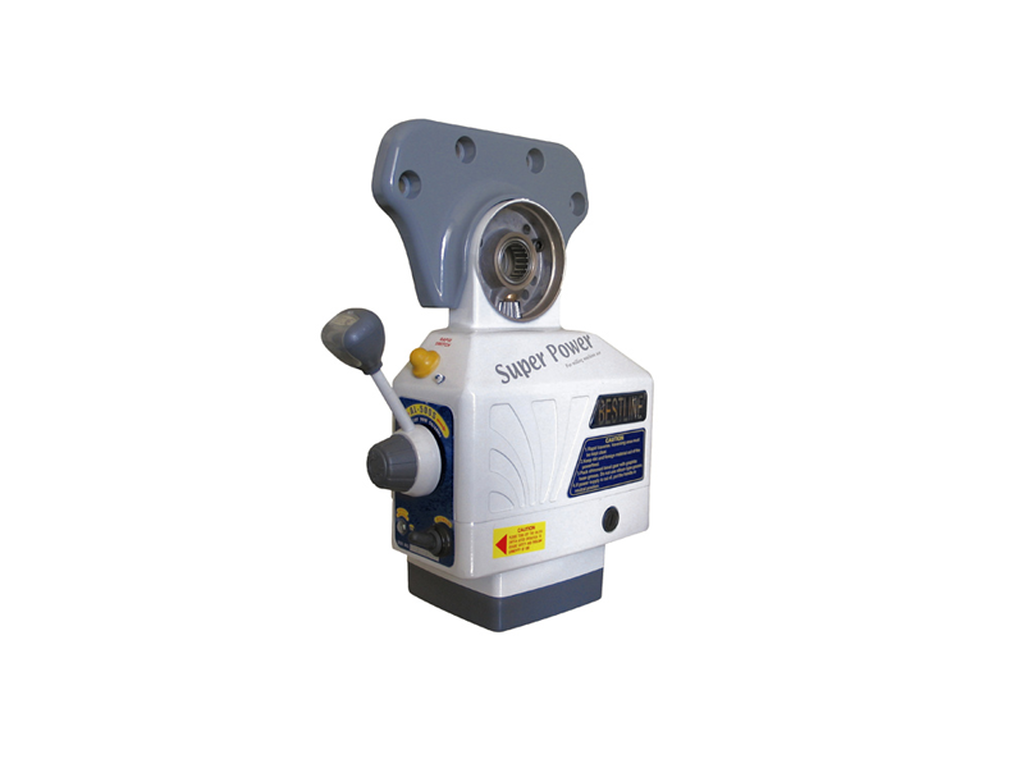How to use AC motor with axis?
- bladekel
- Offline
- Senior Member
-

- Posts: 63
- Thank you received: 2
Do you have any sort of position feedback?
What is the source of the position command (One of the XYZ ABC UVW axes? )
I'm using X Y A U V axes in system. X,A,U are controlling by step/dir and the axes Y and V are willing to be controlled by ccw/cw or enable/dir....
Please Log in or Create an account to join the conversation.
- Mike_Eitel
-

- Offline
- Platinum Member
-

- Posts: 1052
- Thank you received: 183
Please Log in or Create an account to join the conversation.
- andypugh
-

- Offline
- Moderator
-

- Posts: 19717
- Thank you received: 4573
I'm using X Y A U V axes in system. X,A,U are controlling by step/dir and the axes Y and V are willing to be controlled by ccw/cw or enable/dir....
But how does LinuxCNC know when to stop moving? How do you close the loop?
Please Log in or Create an account to join the conversation.
- bladekel
- Offline
- Senior Member
-

- Posts: 63
- Thank you received: 2
I'm using X Y A U V axes in system. X,A,U are controlling by step/dir and the axes Y and V are willing to be controlled by ccw/cw or enable/dir....
But how does LinuxCNC know when to stop moving? How do you close the loop?
I think you are asking what will be the axis movement limit ? ... If so I dont need that, I will solve that electrical....
Please Log in or Create an account to join the conversation.
- bladekel
- Offline
- Senior Member
-

- Posts: 63
- Thank you received: 2
What do you think of a pwmgen, type 2, with extreme frequency. Either very low or very high.
But type2 is also using pwm and I cant use pwm. I need high signal while moving....
Please Log in or Create an account to join the conversation.
- andypugh
-

- Offline
- Moderator
-

- Posts: 19717
- Thank you received: 4573
But how does LinuxCNC know when to stop moving? How do you close the loop?
I think you are asking what will be the axis movement limit ? ... If so I dont need that, I will solve that electrical....[/quote]
You propose to use LinuxCNC axis letter commands to move an AC motor.
Are you proposing to send velocity commands?
ie G0 Y100 means "rotate the Y motor at 100 rpm"?
Or would that mean "move the Y motor to the 100mm position"? In that case LinuxCNC needs to have a way to know that the motor is in the correct position to turn off the motor.
It is possible to use an AC motor for axis position control, but you do need some sort of feedback to LinuxCNC about where the axis currently is.
Please Log in or Create an account to join the conversation.
- pl7i92
-

- Offline
- Platinum Member
-

- Posts: 1872
- Thank you received: 358
Please Log in or Create an account to join the conversation.
- Nigel Pearson
-

- Offline
- New Member
-

- Posts: 6
- Thank you received: 0
I'm trying to do a hack. Brutal inaccurate axis control on a mill.
Like many mills, it has DRO scales, and bolt-on "power feed" units on the X and Y. The ones with a lever for direction, speed control, and an AC motor in there which is geared down by a bevel gear that bolts on near the mill axes handles:
1) Have people tried closed loop feedback seperate from the axis motor shaft?
i.e. measuring the table position, which is 2 or 3 mechanical moving parts away from the motor pulses
(reduction gear, axis screw float/backlash, table gib slop+rotation)
2) How hard is it for LinuxCNC to keep up with TTL scale (quadrature) signals?
3) If that is possible, any suggestions for interface boards to do it?
This mill has ball screws on X+Y, so if my hack really isn't workable, the owner can pay for proper stepper/servo motors, but I'm trying to save some money and keep all the manual stuff still working
Attachments:
Please Log in or Create an account to join the conversation.
- andypugh
-

- Offline
- Moderator
-

- Posts: 19717
- Thank you received: 4573
1) Have people tried closed loop feedback seperate from the axis motor shaft?
i.e. measuring the table position, which is 2 or 3 mechanical moving parts away from the motor pulses
(reduction gear, axis screw float/backlash, table gib slop+rotation)
Yes, but usually with tighter coupling than you are suggesting, and generally with velocity-control servos.
But, depending on what you want, it might work. How close do you want to get to the commanded position?
Does the motor move at constant speed, or is it software-variable?
That all depends on the sample rate of the interface, the resolution of the scales and the speed of motion.2) How hard is it for LinuxCNC to keep up with TTL scale (quadrature) signals?
With the parallel port you are likely to hit the limit if you have fine scales and/or try to move fast. With the Mesa / Pico / General Mechatronics interfaces the sample rate is several Mhz so you are pretty unlikely to hit the limits.
What do you have now? I would be tempted to experiment with the parport if that is what you have.3) If that is possible, any suggestions for interface boards to do it?
Please Log in or Create an account to join the conversation.
- Nigel Pearson
-

- Offline
- New Member
-

- Posts: 6
- Thank you received: 0
I only have slight experience with parallel port setup.
These motors could have variable speed if I work out how to drive them that way. Of course, like most non-steppers, they are low torque at low speed, so there is some tuning issues there.
Please Log in or Create an account to join the conversation.

